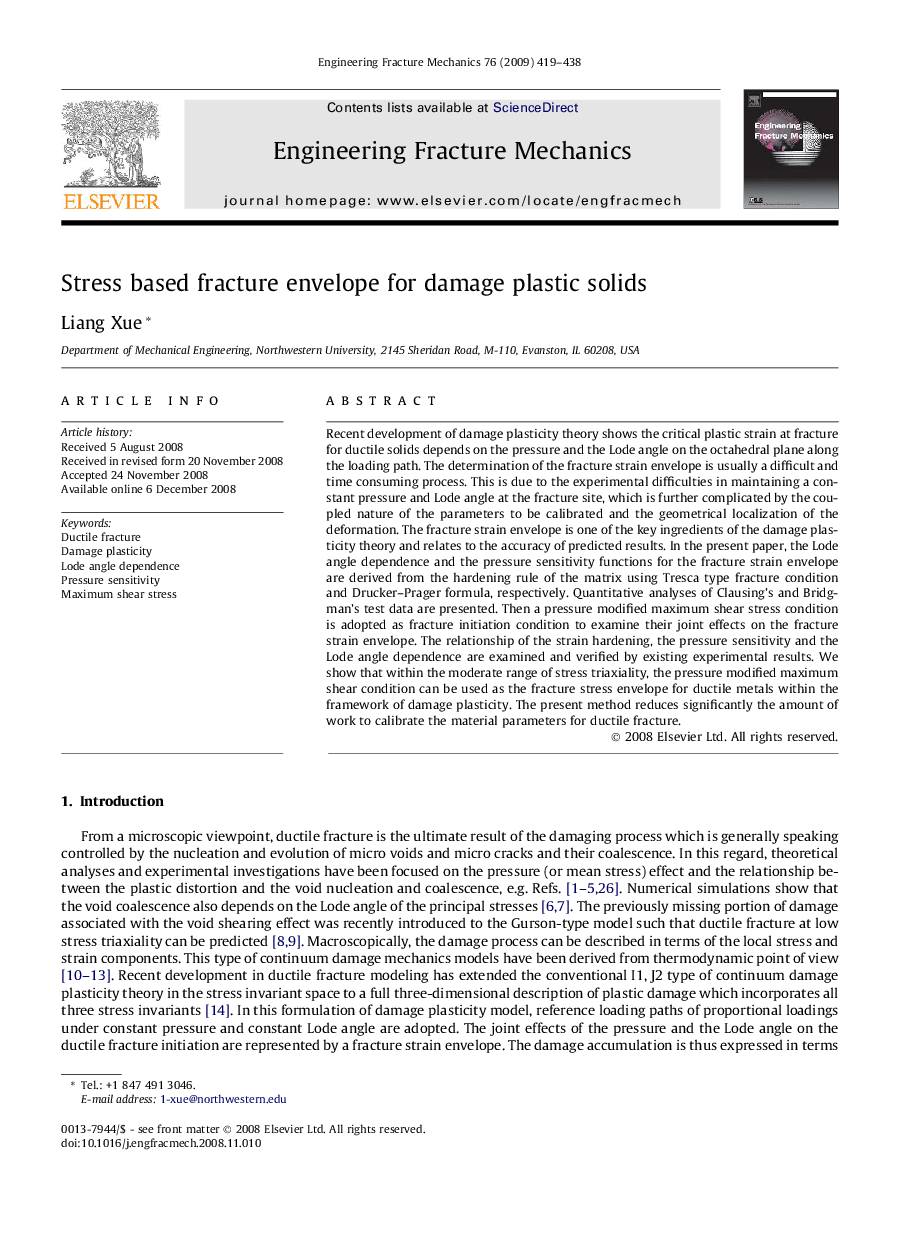| Article ID | Journal | Published Year | Pages | File Type |
|---|---|---|---|---|
| 767941 | Engineering Fracture Mechanics | 2009 | 20 Pages |
Recent development of damage plasticity theory shows the critical plastic strain at fracture for ductile solids depends on the pressure and the Lode angle on the octahedral plane along the loading path. The determination of the fracture strain envelope is usually a difficult and time consuming process. This is due to the experimental difficulties in maintaining a constant pressure and Lode angle at the fracture site, which is further complicated by the coupled nature of the parameters to be calibrated and the geometrical localization of the deformation. The fracture strain envelope is one of the key ingredients of the damage plasticity theory and relates to the accuracy of predicted results. In the present paper, the Lode angle dependence and the pressure sensitivity functions for the fracture strain envelope are derived from the hardening rule of the matrix using Tresca type fracture condition and Drucker–Prager formula, respectively. Quantitative analyses of Clausing’s and Bridgman’s test data are presented. Then a pressure modified maximum shear stress condition is adopted as fracture initiation condition to examine their joint effects on the fracture strain envelope. The relationship of the strain hardening, the pressure sensitivity and the Lode angle dependence are examined and verified by existing experimental results. We show that within the moderate range of stress triaxiality, the pressure modified maximum shear condition can be used as the fracture stress envelope for ductile metals within the framework of damage plasticity. The present method reduces significantly the amount of work to calibrate the material parameters for ductile fracture.
